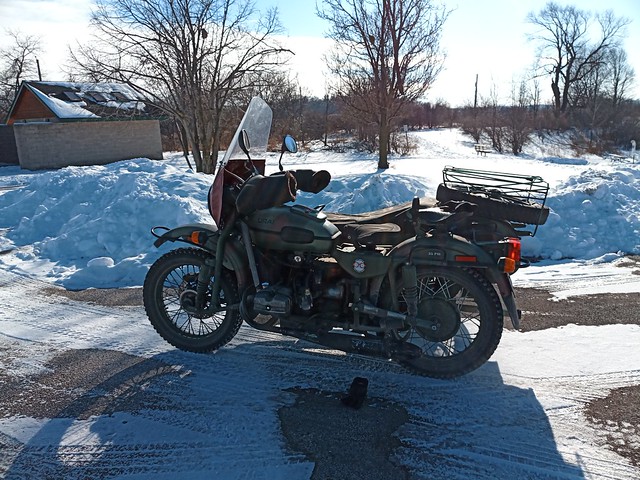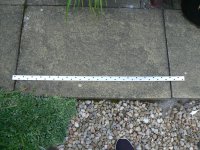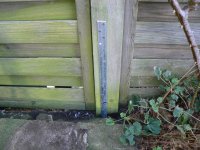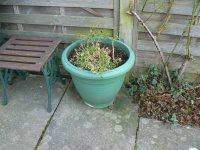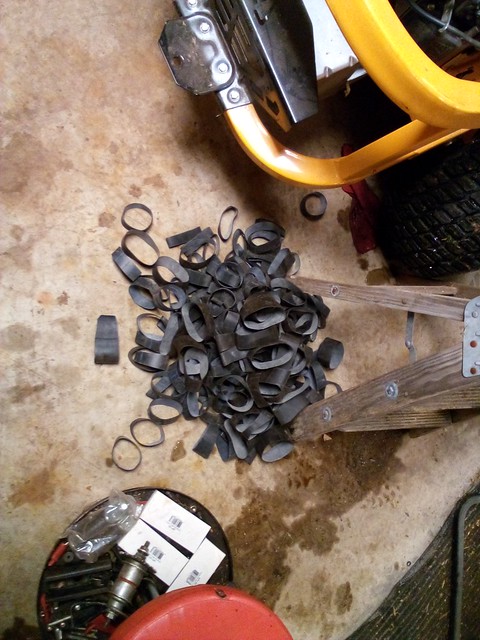Over the last couple of years or so we've been gradually working away at improving our house's heat retention and cutting down on fuel consumed (gas). I've more than doubled the thickness of insulation in the roofspace. Our old wood framed double glazed windows were rotting and no longer sealed properly so we've had new windows, with much better glazing, fitted. We retained the existing, very solid, wooden front and back doors. The front door also has an inner (vestibule) door and by installing draught proofing on both I've effectively created an airlock which is making the hall much warmer. Back door has been draught proofed but I'm looking at further measures with it.
One of the biggest changes has been how we run the central heating. We have a very modern and efficient Gazco gas fire in the living room and we could live with this alone, but it's nice to have the rest of the house warm when getting up and/or going to bed, for which the central heating is needed. A number of years ago Mrs J decided we needed a new kitchen so, of course, a new kitchen was fitted! Part of that was to get rid of our very old, monolithic - took 3 men to carry it out into the back garden! - wall mounted Potterton boiler which, it has to be admitted, was becoming a bit prone to breaking down and spares also were becoming difficult. Our friend - who was doing the kitchen for us - fitted a Worcester Bosch condensing boiler and suggested a "new" way of running the heating. Disregard the wall thermostat (disconnect, as he did with ours, or turn to max) install thermostatic valves on all the radiators - which we didn't have - and control room temperatures with the thermostatic valves. I've adjusted ours so that the spare bedrooms are on frostguard (don't turn off to the "off" stop because after a period of time the valve rubbers inside can seize up) which means they are effectively "off". The hall radiator I keep on number 4 (of a total scale of 5) which ensures the core of the house stays nice and warm. The others are around the 3 mark which means they maintain a pleasant temperature but you notice that the radiators themselves are only "warm" to the touch, compared to the hall which is often "hot" to the touch which indicates to me that the thermostatic valves are doing their job. He also fitted a 2nd zone valve so that the hot water cylinder is only being boosted when it falls below it's thermostat's set temperature (which I keep at around 65c). previously hot boiler water circulated through the cylinder all the time the boiler was running. The boiler itself also seems to regulate it's heat output. the old boiler was either off or on and when on it was going full chat. The new boiler seems to moderate it's "ferocity", going full out when starting up but just ticking over or shutting down when at operating temperature.
The savings in our gas bills are substantial. The condensing boiler must be a major factor in this but I'm convinced the thermostatic controls couple to this "new" way of running the system is substantially contributory.
I do notice though that the hall radiator only feels truly "hot" when the whole system is fully up to temperature and I've convinced myself that this is due to radiator balance. There's a lot on you tube about how to do this, so this morning I decide to have a go at doing it. The first problem I ran into though is that the new valves on the "dumb" end of the radiators - ie the end which does not have the thermostatic valve - seems to have no way of adjusting them.
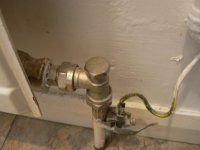
With some trepidation I removed the capping nut and found an Allen headed screw inside, which I found takes a 6mm Allen key.

Those pics are of the rad in the loo but the hall proved just a little more difficult due to it's situation.
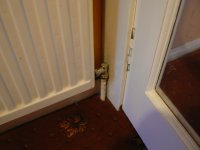
Got it with a 3/8 drive ratchet and 6mm bit though. So screwing it in, clockwise, restricts the flow, just like the old "taps" on my old fittings. and out, anticlockwise, opens it up. I'm still "fiddling" with them to achieve an equal heat at all radiators when all valves are fully open. Feeling very pleased now that, should I have a leak on a radiator for any reason I can go in the garage, grab my 6mm bit and 3/8 ratchet and have that radiator isolated within just a few minutes of noticing the leak. Sitting back with a wee Lidl Cappuccino just now, feeling very pleased with myself!
Many thanks to ben. I've got the hang of inserting images into the text now - as you can see!
 Anywho, the sander was missing the miter guide. I'd been pricing replacements and they were either too big, too small, or cost more than I paid for the sander. Said the heck with it and made my own with what I had on hand in the garage.
Anywho, the sander was missing the miter guide. I'd been pricing replacements and they were either too big, too small, or cost more than I paid for the sander. Said the heck with it and made my own with what I had on hand in the garage.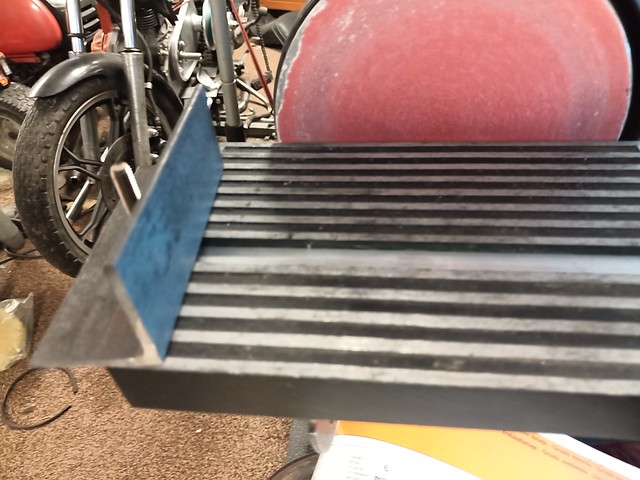
 Just something I never could master, so I need a way to square up ends.
Just something I never could master, so I need a way to square up ends.





